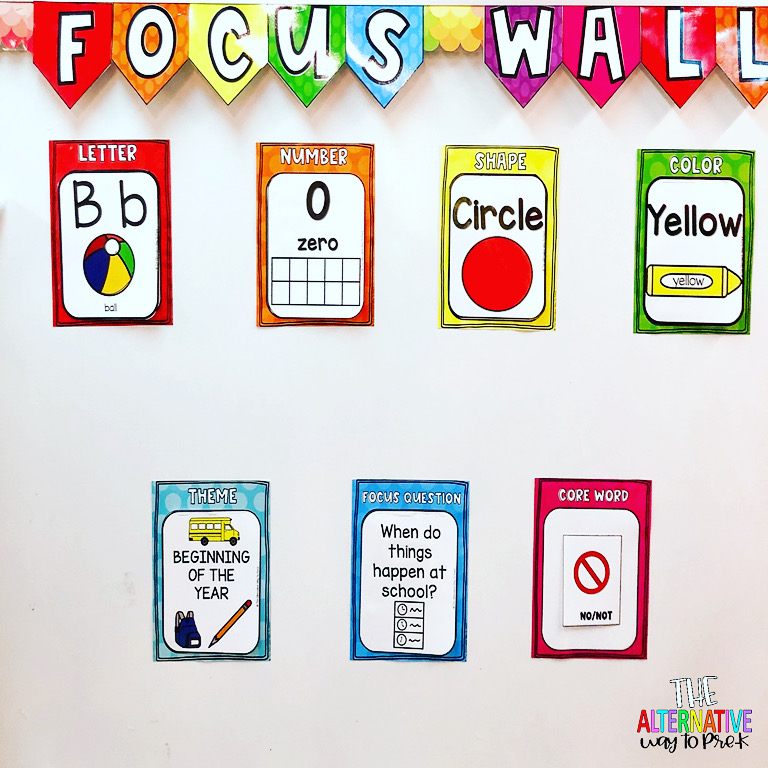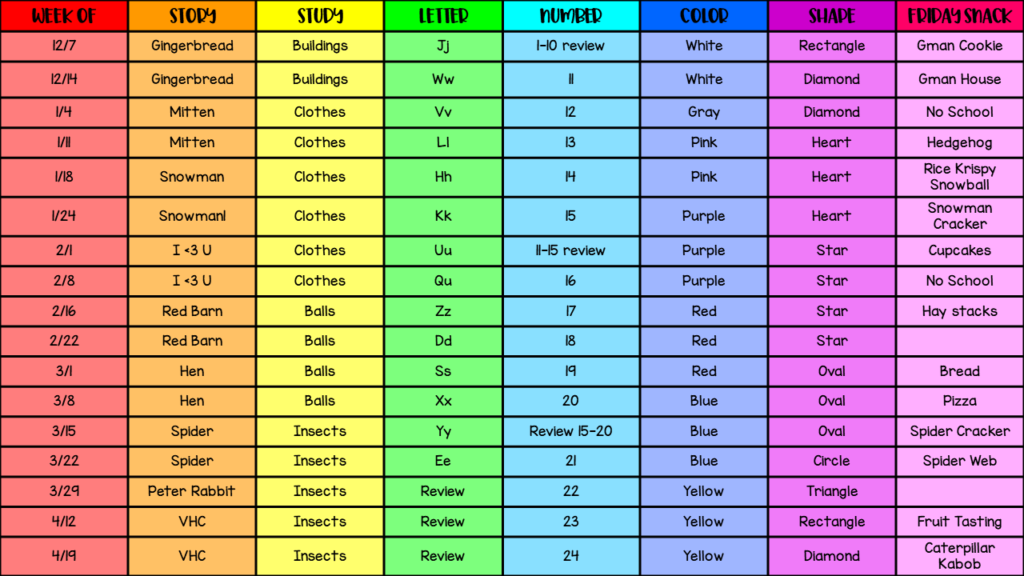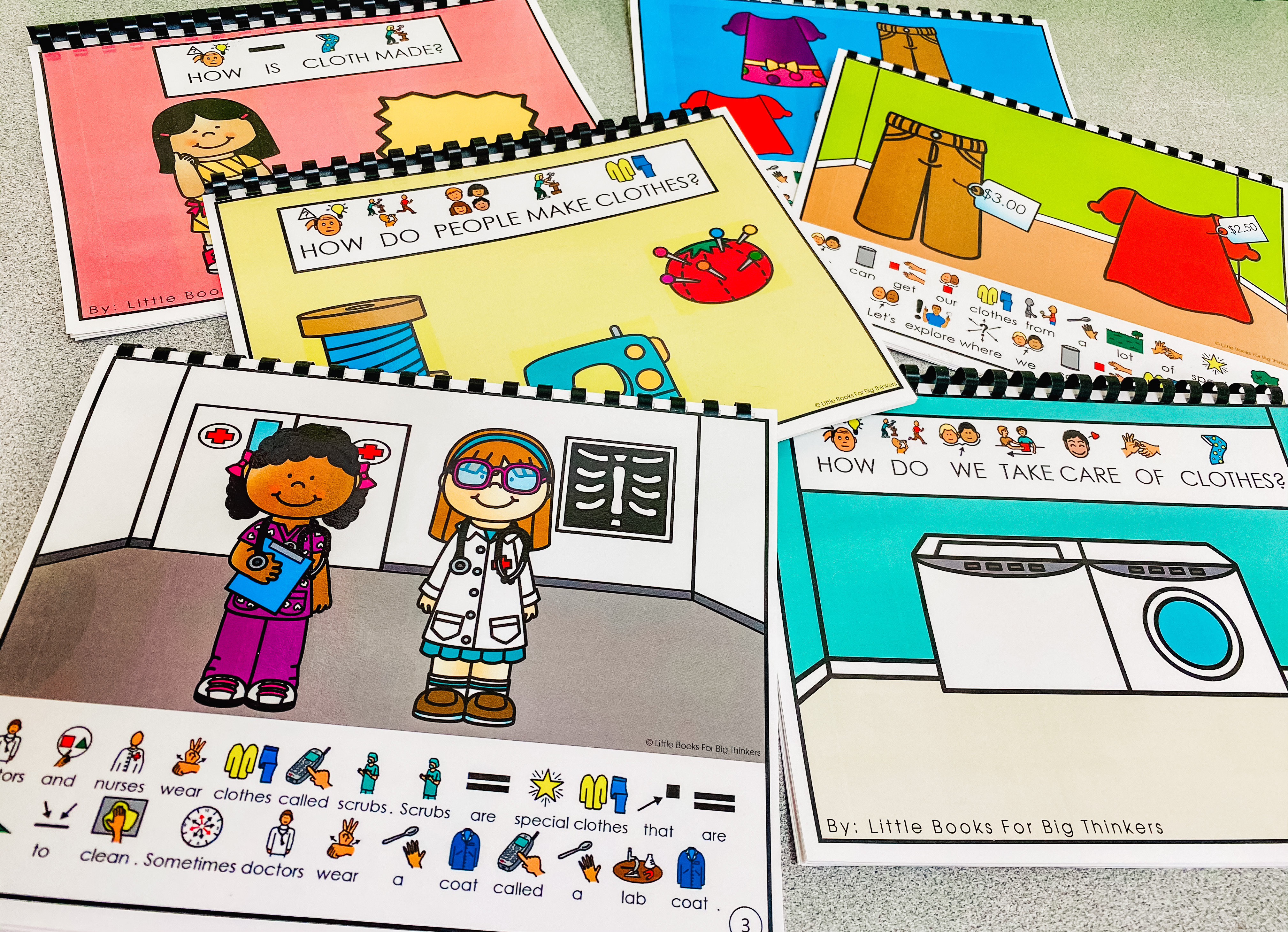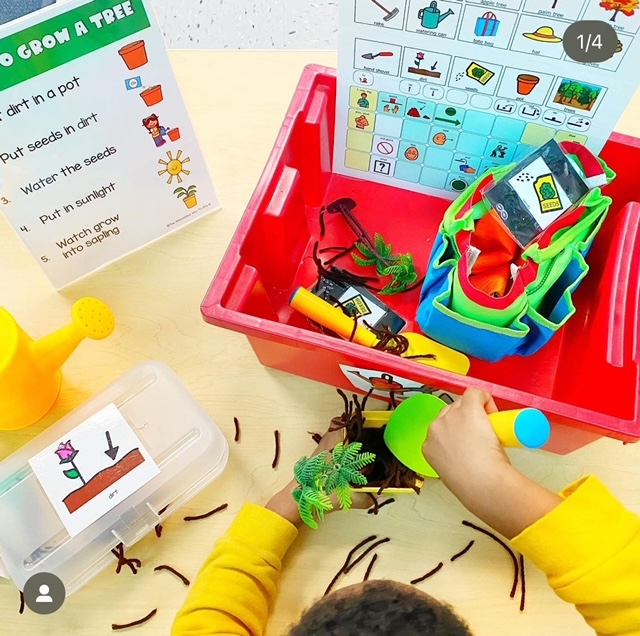Creative curriculum, or as I like to call it CC, is a play-based cross-categorical preschool curriculum. In my district, it was implemented across our 4k general education programs as well as self-contained classrooms.
CC is primarily for a general education classroom. However, its assessment tool covers birth to age 3, making it appealing to special education preschool classrooms.
In this post, I will explain my thoughts, tips, tricks, lesson plans, and adaptions to the Creative Curriculum.
This may be a lengthy post, but I want to ensure I can help you as much as possible! Be sure to read to the end because I spill that tea on my REAL thoughts about Creative Curriclum in ECSE.
At a Glance

For those of you who have seen or used CC, you know it comes in multiple boxes. There are also expansion packs. My district has purchased boxes 1-5, including 11 studies (balls, trees, tubes and tunnels, signs, small machines, insects, sand, buildings, clothes, the beginning of the year, and reduce reuse & recycle).
As I first scanned through the boxes, I was totally overwhelmed. There is a LOT of material and books.
I recommend sifting through everything and familiarizing yourself with the components before you start your plans. As I combed through, I noticed some pros and cons.
Pros
- The Objectives of Learning book aligns directly without state standards
- They are broken down to skill level by age, which is good for me since I have a wide range of abilities in my classroom
- This also creates an excellent goal bank for when writing IEPs.
- Everything is very user-friendly. The weekly lesson plans, guides, and intentional teaching cards are easy to navigate.
- There is a surplus of resources. It allows for a lot of teacher choice and what sequence of studies you would like to use
- Many of the intentional teaching cards, especially the social-emotional cards, are things we already do daily.
Cons
- EVERYTHING needs to be adapted. This curriculum is designed for a general education population. Although it provides objectives and intentional teaching card modification for birth through 4, the lesson plans are inappropriate for my class setting.
- They do not take into account behaviors or AAC.
- AAC (Augmentative and Alternative Communication): There are many language opportunities, but the vocabulary is a bit advanced. Many of my students are nonverbal. Two-thirds of my class use AAC. CC does not provide accommodations for AAC or an emphasis on core vocabulary ( I will share later in this post how I accommodated AAC users).
- Behavior: Many of the lessons require students to have perfect behavior. By that, I mean “sit in the chair ready to work” behavior skills. There are many instances where lessons and activities are not feasible due to some of my students’ behaviors, e.g., elopement, self-regulation, and non-compliance.
- For example, the ball study. As predicted, there are a lot of lessons focused on balls. Naturally, we would teach the appropriate behavior for a ball, but it can sometimes take months to scratch the service, let alone master it. A skill as simple as just not chucking the ball at a classmate’s head or the ceiling is a skill that could take even up to a year to teach. Balls would automatically be a projectile in our classroom and must be monitored for 1:1 use, which is not always feasible.
- Pacing: The pacing is very quick. There is a new focus question, book, and concept every day. Typically, we spend two weeks on a unit that builds upon the ones to come. The pacing of CC is not conducive to learning for my students.
- Read Alouds: This is my least favorite part. Even with adaptation, the texts are still troublesome.
- The read-aloud stories not only last for one day but generally have no correlations between the book and the focus study.
- They are super text-heavy, and the concepts in the books are very advanced for my students. We need very black-and-white yes/ no books, and these books go into a higher level of thinking.
- As mentioned before, our classroom is pretty AAC-involved. This goes hand in hand with reading/language. The vocabulary is very advanced and does not focus on core words. However, I have tried to incorporate as much as I can using AAC Fringe Boards.

Implementation
When I finished unpacking the boxes, I knew I needed to come up with my own plan for my classroom. Essentially, I would dissect CC to pick the parts that worked for my class and make adaptations for my class setting.
Mighty Minutes
I love the concept of Mighty Minutes. We already do it, but we never call it anything special. There are hundreds of Mighty Minutes cards. However, a lot of them do not work for ECSE.
So, in true special education teacher fashion, I adapted them. I pulled the ones that could work, tweaked them, and added our own. I made a total of 14 links HERE.
This way, there is variety but not an overwhelming amount for my kids to learn. I made three sets, put them on binder rings, and hung them by our two doors and one on the front board.
This way, we can quickly access them in the room or clip them to our lanyards as we walk out the door.
Focus Question and Question of The Day

As mentioned before, CC is very fast-paced. Each study typically lasts five weeks with a new focus question of the week. They are generally broad questions and somewhat applicable so we can utilize this piece.
However, we will not be using the question of the day. I created cards for each focus question using visuals from our PCS software Boardmaker. They are linked HERE.
This is the same PCS we use for our AAC devices, so it keeps them consistent.
To keep our focus questions organized, I will add them to our already existing Focus Wall. This wall houses all of our main content areas. The focus wall is linked HERE.

Lesson Plans
CC plans are divided into studies, weeks, day, and lessons. I break my plans down by year, week, and standards ( this will make more sense when you scroll down).
The weekly and daily lesson plans require a lot of adapting. Generally, we can only use two of the suggested weekly activities for whole and small groups.
This is okay because we repeat lessons multiple times, allowing us to focus on one concept at a time.
I plug the ones that work into my lesson plans (see below). When nothing works that week, I pull from the pile of intentional teaching cards that do work and replace it with that. I made a bank of what intentional teaching cards work in what area for easy access.
To get access to my first two weeks of lesson plans, click here!



I am not using any of the provided read-aloud books for read aloud. Instead, I am using text from one of our old curricula called Read Once Again and Little Books for Big Thinkers book series.
However, I am applying intentional teaching cards to each read-aloud and aligning the standards ( the same ones used repeatedly). I will use the CC read-aloud books on our bookshelf and our dismissal book bin.
I collaborated with Rachel from Engaging Early Learners to create the Little Books for Big Thinkers book series. We took the focus question from each study and turned it into a mini-book series. The books come in standard text and Boom Card format.
They can be used in school, online, or at home (click HERE to see more in-depth how I use these books).
I pair these books with my Interactive Study Slides and Smart Notebook to help engage my kiddos and practice the new study vocabulary.

I have also created a set of adapted books and file folders for each study.
Each file folder set contains three folders (one of which is errorless).
Each book set contains an errorless book, a color book, a counting book, and various study-related books.


For scheduling purposes, whole group will consist of three read aloud days (M/W/ F whole group speech) and two whole group lessons (T/TH) from the current focus study. (Crafts are already determined but they are locked up in my classroom currently so I can not plug them in). For more information about our daily schedule CLICK HERE.
Tips & Tricks
There are a lot of materials, many of which I will not even touch. Many things will remain in their boxes, but for the items I did pull, I have an organizational system.
Study Books: I created a super simple colored-coded system, so I know which books go with which study.
I got these stickers on Amazon (linked HERE) and assigned a color to each study. There are 11 studies but only 10 stickers.
One will go on the spine and one on the cover of the study teaching guide. One sticker will go on each book for that study. The remaining research is just a blank



Focus Questions: I’m sticking these inside their corresponding Study Teaching guidebook and securing them with a binder clip. When it is time for that study, I will slide it into the pocket of the blue teaching strategies. Felt binder.
Instructional Teaching Cards: As previously mentioned, I pulled all the cards that would work for me. I then sorted them by activity. Since most cards apply to many activities, I arranged them by objective type (language and literature, math, physical, and social-emotional). They each get their own hanging folder in my filing cabinet next to the teaching guidebooks.

Dramatic Play Center: You can implement CC solely in your dramatic play center and really cover a lot of the curriculum. I have pre-made and adapted ones linked HERE. If you are feeling super overwhelmed and don’t know where to start, CC Dramatic Play Center is the perfect stepping stone.

Real Talk
Okay, let’s be honest. Creative Curriculum, in theory, sounds great for ECSE, but it’s not all that great.
As mentioned above, I adapted and supplemented the entire thing. I staged the crap out of my classroom to be all things Creative Curriculum; the focus wall posters, the dramatic play centers, the books, etc.
Did we actually go along with the study? Nope.
I loopholed everything in my paper plans by applying intentional teaching cards, which, in theory, we did use, and made the room look like a Creative Curriculum wonderland.
But in reality, our main focus was the book we were reading for the two-week period because that worked for me and my students AND the book was not one from the curriculum.
My personal take is that districts want their ECSE programs to align with their general education programming. They see that the assessment tool GOLDS goes down to birth, so it must work for ECSE. Yes, GOLDS is excellent, but it’s not the curriculum. The curriculum itself is not that amazing for ECSE.
The most common question after that is, “Well then, what is a good curriculum for ECSE?” I have yet to find one that checks all the boxes and does not need adaptation. When you find it please let me know.
